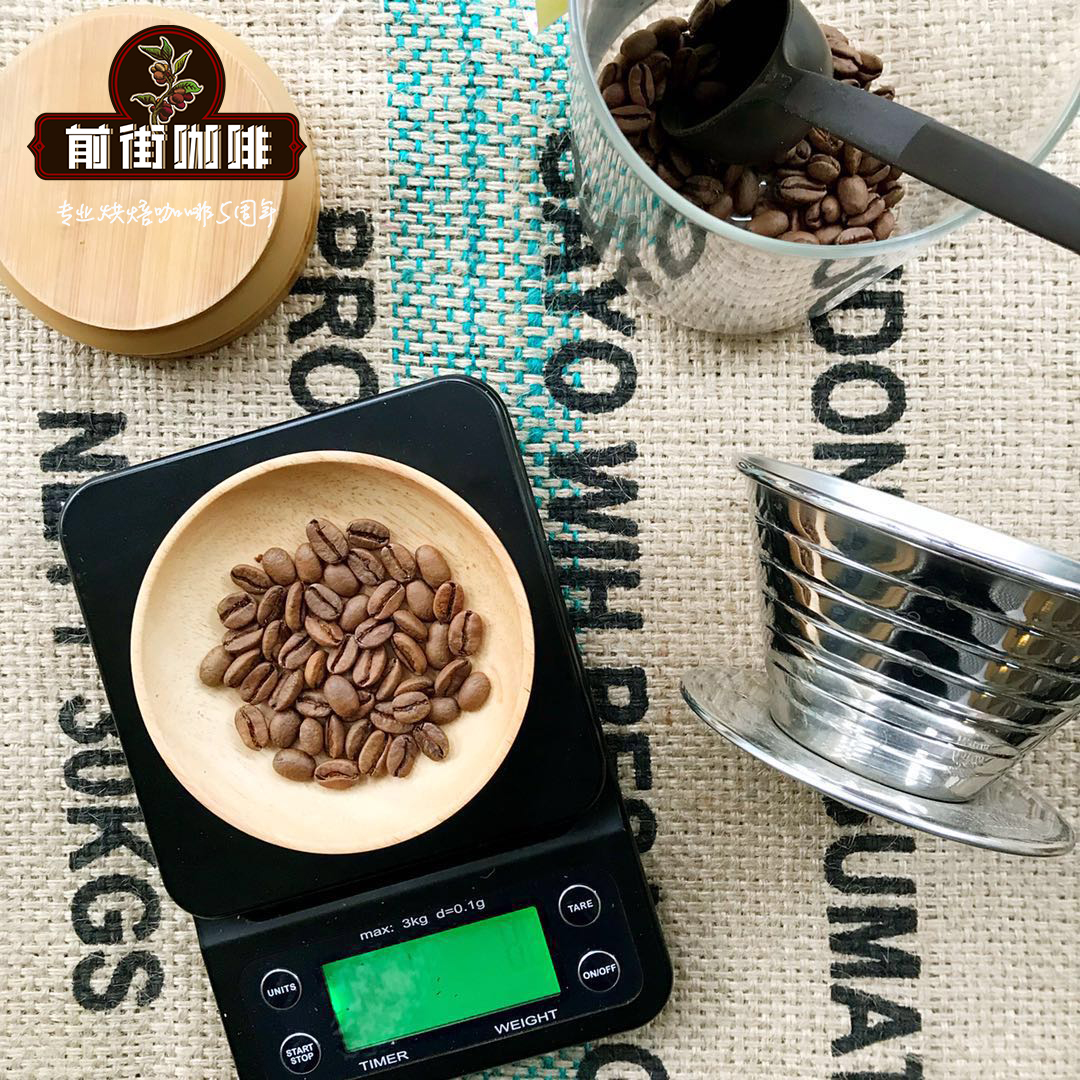Costa Rican organic coffee beans are expensive how do Costa Rican coffee beans taste

Professional coffee knowledge exchange More coffee bean information Please pay attention to coffee workshop (Weixin Official Accounts cafe_style)
Costa Rica's high latitudes produce coffee beans that are famous in the world for being rich, mild, but extremely acidic. Costa Rica's coffee beans here are carefully processed, which is why there is high quality coffee. Costa Rica is located south of San José, the capital of Tarasu, and is one of the country's most valued coffee plantations.
Tarrazu, Costa Rica, is one of the world's leading coffee producers, producing coffee with a light, pure flavor and pleasant aroma. Costa Rica's volcanic soils are fertile and well drained, making it the first country in Central America to grow coffee and bananas for commercial value. Coffee and bananas are the country's main exports. Coffee was introduced to Costa Rica from Cuba in 1729, and today its coffee industry is one of the most well-organized in the world, producing up to 1700 kilograms per hectare. Costa Rica has a population of 3.5 million, but coffee trees number 400 million, and coffee exports account for 25% of the country's total exports. Costa Rica also benefits from the Central American Institute for Agricultural Research (IAAC), established in Tarazu, which is an important international research centre.
Costa Rican coffee beans are known as "extra hard beans" and can grow at altitudes above 1500 meters. Altitude has always been a problem for coffee growers. Coffee beans are better at higher altitudes, not only because higher altitudes increase the acidity of coffee beans and thus enhance flavor, but also because lower night temperatures at higher altitudes cause trees to grow slowly, thus making coffee beans more flavorful. In addition, due to the high altitude drop caused by sufficient rainfall, the growth of coffee trees is also very favorable.
S.H.B. means very hard beans at altitudes above 1500 meters, meaning high-quality Costa Rican coffee beans. This extra-hard coffee bean suitable for medium and heavy roasts has a strong acidity and attractive aroma. Costa Rican SHG coffee is usually full of particles, clear flavor, bright acidity, consistency is also very good, strong flavor makes the ending rhyme in the throat for a long time, unforgettable.
Other coffees worth mentioning are Juan Vinas (PR), H.Tournon, Windmill (SHB), Montebello and Santa Rosa. Fine coffee is grown in Geredia and the Central Valley. Another striking coffee is Sarchi (one of five towns that represent Costa Rica's "coffee route"), which grows on the slopes of Poas Volcano, 53 kilometers from San Jose. Saatchi was founded in 1949 and has 30770 hectares of land to grow sugar cane and coffee. The area is also known for its handicrafts, attracting tourists from all over the world.
Located in the fertile volcanic hills of the Poas Valley in Central Costa Rica, the first producer of honey-treated and sun-cured coffee in Central and South America, the 100% organic coffee plantation believes that organic farming is the best choice for environmental protection and family health, despite many technical and organizational challenges.
The estate pays great attention to the concept of environmentally friendly treatment, such as rainwater harvesting for coffee treatment; the production and use of organic compost using earthworm farming (worm compost) makes the planting process completely free of chemical fertilizers and pesticides. The high quality coffee produced by this estate is very unique, the biggest feature is that it has a very amazing sweetness, 100% organic coffee! He made a name for himself when he entered the boutique coffee contest in 2009.
During the harvest season, the Brixmeter, which is often used in the wine industry, measures the sugar content of the fruit and determines the best time and treatment for harvesting according to the brix sugar content. Only those exceeding 20% sweetness will be exposed to sunlight. The Brix value of ordinary fruits is 14 for apples, 12 for lemons and 18 for passion fruits, but the coffee cherries of Phoenix Manor can reach 21~22.
Costa Rican coffee beans have a long history of cultivation, but in the past 10 years, more advanced "dry" treatment method has become a trend, collectively referred to as "honey treatment" new method, honey treatment method is a kind of treatment between the sun method and the water washing method. It keeps the coffee clean from washing, and because it is sun-dried along with the pulp mucosa, it greatly increases the sweetness and caramel flavor of the coffee (the pulp mucosa is extremely high in sugar). Honey treatment first appeared in Costa Rica in Central America, mainly because of the lack of water resources in some high altitude areas of Central America, so coffee fruits were sun-dried together with the pulp mucosa after using a pulp sifter. Costa Rican coffee beans treated with honey are graded according to the degree of pulp retention in three categories (in descending order): yellow honey (20%), red honey (50%), and black honey (100%). The drying time of red honey treated green coffee beans is 2-3 weeks, usually due to weather or placed in a dark place. If the weather is fine, growers shade some of the sun to reduce the amount of light. The advantage of doing so is that it can avoid the over-fermentation caused by direct exposure, so that the overall dried fruit flavor of coffee is obvious but not excessively strong, the fruit is delicate and the oil is thick and lasting, and the rhyme is long!
Costa Rican coffee beans
Front Street Coffee roasts Costa Rican beans with full guarantees of brand and quality. More importantly, the cost performance is extremely high, a pack of 227 grams, the price is only 95 yuan. According to the calculation of 15 grams of powder per cup of coffee, a pack can make 15 cups of coffee, each cup only costs about 6 yuan, compared with the price of dozens of cups sold in cafes.
Important Notice :
前街咖啡 FrontStreet Coffee has moved to new addredd:
FrontStreet Coffee Address: 315,Donghua East Road,GuangZhou
Tel:020 38364473
- Prev

Is Costa Rican organic coffee beans expensive? what's the taste of Costa Rican coffee beans?
Professional coffee knowledge exchange more coffee bean information Please follow the coffee workshop (Wechat official account cafe_style) Coffee beans produced in the high latitudes of Costa Rica are famous in the world, rich, mild, but extremely sour, the Costa Rican coffee beans here are carefully processed, which is why there is high quality coffee. Costa Rica is located in Tara.
- Next

Brief introduction of Costa Rican Coffee Variety Saqimo Sarchimor Price of Costa Rican coffee beans
Professional coffee knowledge exchange more coffee bean information please pay attention to the coffee workshop (Wechat official account cafe_style) Costa Rica coffee bean honey treatment is a kind of intermediate treatment between sun drying and water washing. It keeps the coffee clean by washing, and because it is dried in the sun together with the pulp mucosa, it greatly increases the sweetness and caramel flavor of the coffee.
Related
- Does Rose Summer choose Blue, Green or Red? Detailed explanation of Rose Summer Coffee plots and Classification in Panamanian Jade Manor
- What is the difference between the origin, producing area, processing plant, cooperative and manor of coffee beans?
- How fine does the espresso powder fit? how to grind the espresso?
- Sca coffee roasting degree color card coffee roasting degree 8 roasting color values what do you mean?
- The practice of lattes: how to make lattes at home
- Introduction to Indonesian Fine Coffee beans-- Java Coffee producing area of Indonesian Arabica Coffee
- How much will the flavor of light and medium roasted rose summer be expressed? What baking level is rose summer suitable for?
- Introduction to the characteristics of washing, sun-drying or wet-planing coffee commonly used in Mantenin, Indonesia
- Price characteristics of Arabica Coffee Bean Starbucks introduction to Manning Coffee Bean Taste producing area Variety Manor
- What is the authentic Yega flavor? What are the flavor characteristics of the really excellent Yejasuffi coffee beans?

